CRI实用英语课堂 Unit 21 Merry Christmas 圣诞节快乐
搜索关注在线英语听力室公众号:tingroom,领取免费英语资料大礼包。
(单词翻译)
 Part 1 The History of Christmas 圣诞节的来历
Part 1 The History of Christmas 圣诞节的来历
Christmas is a Christian1 holiday that celebrates the birth of Jesus Christ. No one knows the exact date of Christ's birth, but most Christians2 observe Christmas on December 25. On this day, many go to church, where they take part in special religious services. During the Christmas season, they also exchange gifts and decorate their homes with holly3, mistletoe, and Christmas trees. The word Christmas comes from Cristes maesse, an early English phrase that means Mass of Christ. The story of Christmas comes chiefly from the Gospels of Saint Luke and Saint Matthew in the New Testament4.
The history of Christmas dates back over 4000 years. Many of our Christmas traditions were celebrated5 centuries before the Christ child was born. The 12 days of Christmas, the bright fires, the yule log, the giving of gifts, carnivals(parades) with floats, carolers who sing while going from house to house, the holiday feasts, and the church processions can all be traced back to the early Mesopotamians.
Many of these tradit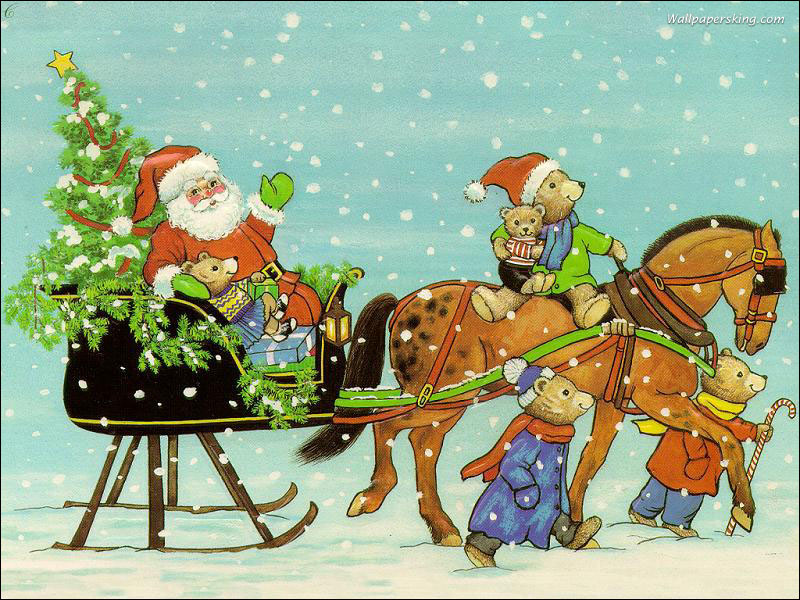 ions began with the Mesopotamian celebration of New Years. The Mesopotamians believed in many gods, and as their chief god-Marduk. Each year as winter arrived it was believed that Marduk would do battle with the monsters of chaos6. To assist Marduk in his struggle the Mesopotamians held a festival for the New Year. This was Zagmuk, the New Year's festival that lasted for 12 days.
ions began with the Mesopotamian celebration of New Years. The Mesopotamians believed in many gods, and as their chief god-Marduk. Each year as winter arrived it was believed that Marduk would do battle with the monsters of chaos6. To assist Marduk in his struggle the Mesopotamians held a festival for the New Year. This was Zagmuk, the New Year's festival that lasted for 12 days.
The Persians and the Babylonians celebrated a similar festival called the Sacaea. Part of that celebration included the exchanging of places, the slaves would become the masters and the masters were to obey. The ancient Greeks held a festival similar to that of the Zagmuk/Sacaea festivals to assist their god Kronos who would battle the god Zeus and his Titans.
The Roman's celebrated their god Saturn7. Their festival was called Saturnalia which began the middle of December and ended January 1st. With cries of "Jo Saturnalia!" the celebration would include masquerades in the streets, big festive8 meals, visiting friends, and the exchange of good-luck gifts called Strenae (lucky fruits). The Romans decked their halls with garlands of laurel and green trees lit with candles. Again the masters and slaves would exchange places.
"Jo Saturnalia!" was a fun and festive time for the Romans, but the Christians thought it an abomination to honor the pagan god. The early Christians wanted to keep the birthday of their Christ child a solemn and religious holiday, not one of cheer and merriment as was the pagan Saturnalia.
Some legends claim that the Christian "Christmas" celebration was invented to compete against the pagan celebrations of December. The 25th was not only sacred to the Romans but also the Persians whose religion Mithraism was one of Christianity's main rivals at that time. The Church eventually was successful in taking the merriment, lights, and gifts from the Saturanilia festival and bringing them to the celebration of Christmas.
The exact day of the Christ child's birth has never been pinpointed9. Traditions say that it has been celebrated since the year 98 AD. In 137 AD the Bishop10 of Rome ordered the birthday of the Christ Child celebrated as a solemn feast. In 350 AD another Bishop of Rome, Julius I, choose December 25th as the observance of Christmas.
The birth of Jesus had a story: In Nazareth, a city of Galilee. The virgin's name was Mary was betrothed11 to Joseph. Before they came together, she was found with child of the Holy Spirit. Joseph her husband was minded to put her away secretly. While he thought about these things, Gabriel, an angel of the Lord appeared to him in a dream and told him did not be afraid to take Mary as wife. And Mary will bring forth12 a Son, and he shall call his name, Jesus, for he will save his people from their sins.
Before Jesus births, Jo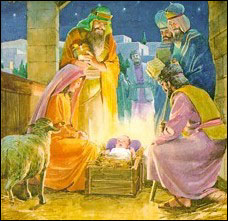 seph and Mary came to Quirnius was governing Syria. So all went to be registered, everyone to his own city. Joseph also went up out of Galilee, out of the city of Nazareth, into Judea, to the city of David, which is called Bethlehem, because he was of the house and of the lineage of David, to be registered with Mary, his betrothed wife, who was with child. So it was that while they were there, the days were completed for her to be delivered. And she brought forth her firstborn Son, and wrapped him in swaddling cloths, and laid him in a manger, because there was no room for them in the inn.
seph and Mary came to Quirnius was governing Syria. So all went to be registered, everyone to his own city. Joseph also went up out of Galilee, out of the city of Nazareth, into Judea, to the city of David, which is called Bethlehem, because he was of the house and of the lineage of David, to be registered with Mary, his betrothed wife, who was with child. So it was that while they were there, the days were completed for her to be delivered. And she brought forth her firstborn Son, and wrapped him in swaddling cloths, and laid him in a manger, because there was no room for them in the inn.
And that, Christmas is the feast of the nativity of Jesus, is on 25th, December every year. But nobody knows the actual birthday of Jesus. And the Christmas has become popular when Christmas cards appeared in 1846 and the concept of a jolly Santa Claus was first made popular in nineteenth Century.
The custom of giving gifts to relatives and friends on a special day in winter probably began in ancient Rome and northern Europe. In these regions, people gave each other small presents as part of their year-end celebrations.
In the 1800's, two more Christmas customs became popular--decorating Christmas trees and sending Christmas cards to relatives and friends. Many well-known Christmas carols, including ``Silent Night" and ``Hark! The Herald13 Angels Sing," were composed during this period. In the United States and other countries, Santa Claus replaced Saint Nicholas as the symbol of gift giving.
The word Xmas is sometimes used instead of Christmas. This tradition began in the early Christian church. In Greek, X is the first letter of Christ's name. It was frequently used as a holy symbol. 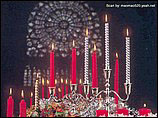
“圣诞节”这个名称是“基督弥撒”的缩写。弥撒是教会的一种礼拜仪式。耶诞节是一个宗教节。我们把它当作耶稣的诞辰來庆祝,因而又名耶诞节。这一天,世界所有的基督教会都举行特別的礼拜仪式。但是有很多圣诞节的欢庆活动和宗教并无半点关联。交换礼物,寄圣诞卡,这都使圣诞节成为一个普天同庆的日子。
圣诞节是基督教世界最大的节日。4世纪初,1月6日是罗马帝国东部各教会纪念耶稣降生和受洗的双重节日、称为“主显节”Epiphany,亦称“显现节”即上帝通过耶稣向世人显示自己。当时只有耶路撒冷的教会例外,那里只纪念耶稣的诞生而不纪念耶稣的受洗。
后来历史学家们在罗马基督徒习用的日历中发现公元 354年12月25日页内记录着:“基督降生在犹大的伯利恒。”经过研究,一般认为12月25日作为圣诞节可能开始于公元336年的罗马教会。12月25日原来是波斯太阳神(即光明之神)密特拉(Mithra)的诞辰,是一个异教徒节日,同时太阳神也是罗马国教众神之一。这一天又是罗马历书的冬至节,崇拜太阳神的异教徒都把这一天当作春天的希望,万物复苏的开始。可能由于这个原因,罗马教会才选择这一天作为圣诞节。这是教会初期力图把异教徒的风俗习惯基督教化的措施之一。后来,虽然大多数教会都接受12月25日为圣诞节,但又因为各地教会使用的历书不同,具体日期不能统一,于是就把12月24日到第二年的1月6日定为圣诞节节期(Christmas Tide),各地教会可以根据当地具体情况在这段节期之内庆祝圣诞节。
随着基督教的广泛传播,圣诞节已成为各教派基督徒,甚至广大非基督徒群众的一个重要节日。在欧美许多国家里,人们非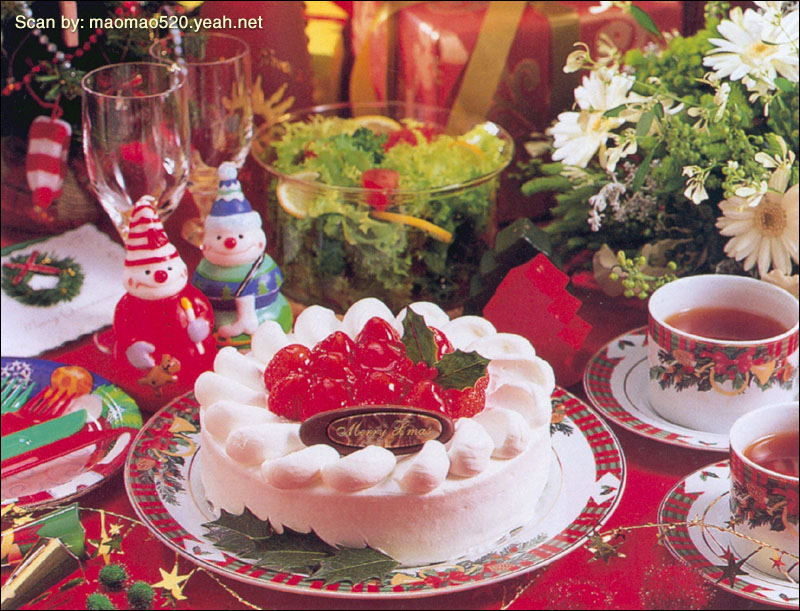 常重视这个节日,把它和新年连在一起,而庆祝活动之热闹与隆重大大超过了新年,成为一个全民的节日。
常重视这个节日,把它和新年连在一起,而庆祝活动之热闹与隆重大大超过了新年,成为一个全民的节日。
12月25日的主要纪念活动都与耶稣降生的传说有关。耶稣的出生是有一段故事的,耶稣是因着圣灵成孕,由童女马利亚所生的。神更派遣使者加伯列在梦中晓谕约瑟,叫他不要因为马利亚未婚怀孕而不要她,反而要与她成亲,把那孩子起名为“耶稣”,意思是要他把百姓从罪恶中救出來。当马利亚快要临盆的时候,罗马政府下了命令,全部人民到伯利恒务必申报戶籍。约瑟和马利亚只好遵命。他们到达伯利恒时,天色已昏,无奈两人未能找到旅馆借宿,只有一个马棚可以暫住。就在這时,耶稣要出生了!於是马利亚唯有在马槽上,生下耶稣。
后人为纪念耶稣的诞生,便把十二月二十五日定为圣诞节,纪念耶稣的出世。但真实的诞生日就沒有人知道了。十九世紀,圣诞卡的流行、圣诞老人的出现,圣诞节也开始流行起來了。
P art 2 The History of Santa Claus 圣诞老人的来历
art 2 The History of Santa Claus 圣诞老人的来历
On the night before Christmas, all across the world, millions of children will be tucked in their beds while "visions of sugarplums dance in their heads." When they awake they will check their stockings to see if Santa Claus has come.
Santa Claus has become the most beloved of Christmas symbols and traditions. The image of the jolly old elf flying in a sleigh pulled by reindeers and leaving toys and gifts for every child is known worldwide.
Just like the season of Christmas, the history of the origins of Santa Claus is influenced by the customs and cultures of many countries, beginning in Asia Minor14 sometime around the 4th century AD. It was here that Bishop Nicholas became renowned15 for his exceptional generosity16, especially to the very you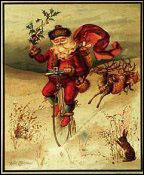 ng. Many years later he became known as Saint Nicholas, the patron saint of children.
ng. Many years later he became known as Saint Nicholas, the patron saint of children.
As time went on, adults began to dress in the manner of Saint Nicholas, dressed in Bishops17 vestments and carrying a staff., to re-enact the kindness of the saint. They went from house to house, asking if the children who lived there had been well behaved. In response to these visits, the children left their shoes outside the doors of their houses so that next morning they might find them filled with sweets and trinkets.
An Anglo-Saxon version eventually evolved and was known as Father Christmas. His character was a mixture of the Saint Nicholas and earthly perceptions of the gods Thor and Saturn. He wore robes decorated with ivy18 and holly and carried a switch to threaten unruly children, as well as a bag of toys to reward the well behaved.
In North America the British, German and Dutch settlers introduced their own derivations of Father Christmas and of these the Dutch figure of 'Sinterklaas' became the common favourite. Eventually this name was anglicised to become Santa Claus, the mythical19 figure of Christmas who placed toys, sweets and trinkets into stockings hung by the fireplace.
The modern perception of the character of Father Christmas was greatly influenced by Thomas Nast, a cartoonist with Harpers Weekly, who published a drawing of Santa Claus in 1860. This was a portly figure with white hair and a long beard, dressed in a red robe and wearing a crown of holly, holding a long clay pip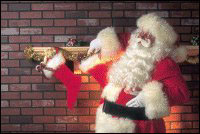 e similar to that of Sinterklaas.
e similar to that of Sinterklaas.
Perhaps the final stage in the evolution of the modern Santa Claus was brought about by publicity20 from the Coca Cola Company. They launched an advertising21 campaign in the 1930s with Santa Claus as the central figure and subsequently used the motif22 for the next forty years or so.
This conception of Santa Claus was produced for them by Haddon Sundblom, who built on the character and costume created by Thomas Nast to produce a cheery, chubby23 fellow that is still a familiar perception of the mythical Christmas character to millions of people throughout the Western world.
圣诞老人的传说在数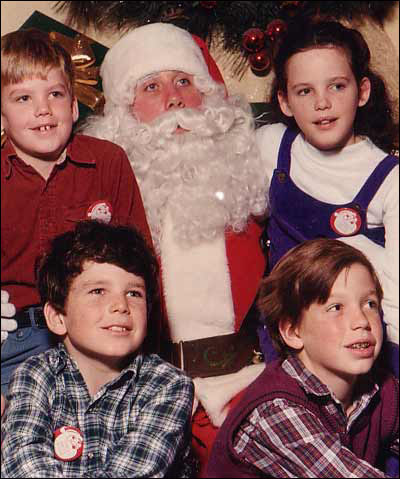 千年前的斯堪的纳维亚半岛即出现。北欧神话中司智慧,艺术,诗词,战争的奥丁神,寒冬时节,骑上他那八脚马坐骑驰骋于天涯海角,惩恶扬善,分发礼物。与此同时,其子雷神着红衣以闪电为武器与冰雪诸神昏天黑地恶战一场,最终战胜寒冷。据异教传说,圣诞老人为奥丁神后裔。也有传说称圣诞老人由圣·尼古拉而来,所以圣诞老人也称St.Nicholas.因这些故事大多弘扬基督精神,其出处,故事情节大多被淡忘,然而圣诞老人却永驻人们精神世界。
千年前的斯堪的纳维亚半岛即出现。北欧神话中司智慧,艺术,诗词,战争的奥丁神,寒冬时节,骑上他那八脚马坐骑驰骋于天涯海角,惩恶扬善,分发礼物。与此同时,其子雷神着红衣以闪电为武器与冰雪诸神昏天黑地恶战一场,最终战胜寒冷。据异教传说,圣诞老人为奥丁神后裔。也有传说称圣诞老人由圣·尼古拉而来,所以圣诞老人也称St.Nicholas.因这些故事大多弘扬基督精神,其出处,故事情节大多被淡忘,然而圣诞老人却永驻人们精神世界。
在德国,传说他把坚果和苹果放在孩子们鞋里。他乘双轮马车四处漫游,观察人们的行为,尤其是小孩,如果表现好,将会得到苹果、坚果、糖等诸多奖品。坏孩子则得一鞭子。家长们灵机一动纷纷采用此传说来鼓励孩子们听话。大大超过了新年,成为一个全民的节日。圣诞老人已经成为圣诞节最受喜爱的象征和传统。他赶着驯鹿,拉着装满玩具和礼物的雪橇挨家挨户给每个孩子送礼物的快乐老精灵的形象已深深地留在人们的记忆中。
19世纪60年代卡通制作者Thomas Nash画了一幅胖胖的、慈祥的圣诞老人作为《Harper的一周》的插图。这个圣诞老人的形象开始深深地扎根于美国人民的脑海中。随着时间的推移,圣诞老人的形象传回欧洲,传到南美洲,传遍世界各地。
Part 3 The Christmas Tree 圣诞树
A beautifully decorated evergreen24 tree, with colored lights ablaze25 inspires in many warm memories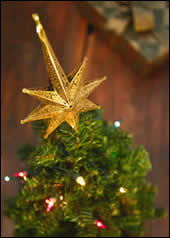 of Christmases long past. The Christmas tree has become one of the most beloved and well know holiday symbols.
of Christmases long past. The Christmas tree has become one of the most beloved and well know holiday symbols.
The tradition of a holiday tree has been around since ancient times and has played an important part in winter celebrations for many centuries. Many pagan festivals used trees when honoring their gods and spirits. In Northern Europe the Vikings considered the evergreen a symbol and reminder26 that the darkness and cold of winter would end and the green of spring would return. The Druids of ancient England and France decorated oak trees with fruit and candles to honor their gods of harvests. At the festival Saturnalia the Romans decorated trees with trinkets and candles.
The use of a Christmas tree indoors appears to have begun in Germany. German Christians would bring trees into their homes to decorate. In some areas evergreen trees were scarce so the families would build a Christmas pyramid, simple wooden structures which they decorated with branches and candles.
The tradition of the Christmas tree eventually spread through out Europe. The English Royalty27 helps popularize the tree in England by decorating the first Christmas tree at Windsor Castle in 1841. Prince Albert, husband of Queen Victoria, decorated the first English Christmas Tree with candles, candies, fruits, and gingerbread.
When the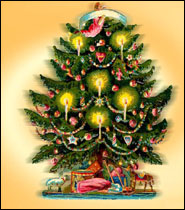 German immigrants went to American they also brought along their Christmas trees. In the 1830's most Americans still considered the Christmas tree an oddity. One of the first public displays of a Christmas tree was set up by German Settlers in Pennsylvania. At the time many still considered the tree to be a symbol of pagans and it wasn't until the late 1800's that Americans began accepting the Christmas tree.
German immigrants went to American they also brought along their Christmas trees. In the 1830's most Americans still considered the Christmas tree an oddity. One of the first public displays of a Christmas tree was set up by German Settlers in Pennsylvania. At the time many still considered the tree to be a symbol of pagans and it wasn't until the late 1800's that Americans began accepting the Christmas tree.
Early Christmas trees were often decorated with apples, nuts, cookies, colored popcorn28 and candles. The invention of electricity in the early 20th century and use of electrical Christmas lights helped spread the use of the Christmas tree.
It is now common in most communities through out the US to feature public displays of Christmas trees. Every year the President of the United States lights the National Christmas Tree in Washington and in New York skaters spin beneath the lighted tree of Rockefeller Center. Through Europe and the rest of the world the Christmas tree has also become readily accepted and adored.
圣诞树一直是庆祝圣诞节不可少的装饰物,如果家中没有圣诞树,就大大减少了过节气氛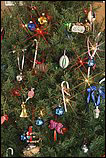 。关于圣诞树的来源有多种不同的传说。其中一个是说:大约在十六世纪,圣诞树最先出现在德国,德国人把长青的松柏枝拿到屋中去摆设,将之成为圣诞树。后来,由德国人马丁路德把蜡烛放在树林中的枞树枝上,然后点燃蜡烛,使它看起来像是引导人们到伯利恒去。而今日,人们已经改用粉色的小灯泡了。
。关于圣诞树的来源有多种不同的传说。其中一个是说:大约在十六世纪,圣诞树最先出现在德国,德国人把长青的松柏枝拿到屋中去摆设,将之成为圣诞树。后来,由德国人马丁路德把蜡烛放在树林中的枞树枝上,然后点燃蜡烛,使它看起来像是引导人们到伯利恒去。而今日,人们已经改用粉色的小灯泡了。
另一个传说记载。在很久以前,曾有一位农民,在圣诞节那天遇到一个穷苦小孩,他热情地接待了这个小孩。小孩临走时折下一根松枝插在地上,松枝立即变成一棵树,上面挂满了礼物,以答谢农民的好意。
圣诞树真正出现在圣诞节时,首先见于德国,之后又传入欧洲和美国,并以其优美的姿态,成为圣诞节不可缺少的装饰。圣诞树的种类繁多,有天然松柏圣诞树、也有人造圣诞树及白色圣诞树。每棵圣诞树上都挂满琳琅满目的装饰品,但每棵树的顶端必定有个特大的星星,而且也只有该家庭的一家之主可以把这棵希望之星挂上。
Part 4 Christmas Stockings and Christmas Cards 圣诞袜和圣诞卡
There was a kindly29 nobleman whose wife had died of an illness leaving the nob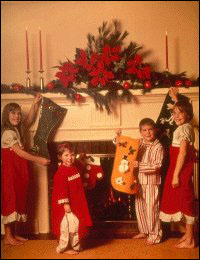 leman and his three daughters in despair. After losing all his money in useless and bad inventions the family had to move into a peasant's cottage, where the daughters did their own cooking, sewing and cleaning.
leman and his three daughters in despair. After losing all his money in useless and bad inventions the family had to move into a peasant's cottage, where the daughters did their own cooking, sewing and cleaning.
When it came time for the daughters to marry, the father became even more depressed30 as his daughters could not marry without dowries, money and property given to the new husband's family.
One night after the daughters had washed out their clothing they hung their stockings over the fireplace to dry. That night Saint Nicholas, knowing the despair of the father, stopped by the nobleman's house. Looking in the window Saint Nicholas saw that the family had gone to bed. He also noticed the daughters stockings. Inspiration struck Saint Nicholas and he took three small bags of gold from his pouch31 and threw them one by one down the chimney and they landed in the stockings.
The next morning when the daughters awoke they found their stockings contained enough gold for them to get married. The nobleman was able to see his three daughters marry and he lived a long and happy life.
Children all over the world continue the tradition of hanging Christmas stockings. In some countries children have similar customs, in France the children place their shoes by the fireplace, a tradition dating back to when children wore wooden peasant shoes.
In Holla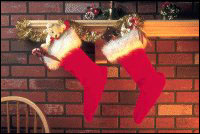 nd the children fill their shoes with hay and a carrot for the horse of Sintirklass. In Hungary children shine their shoes before putting them near the door or a window sill.
nd the children fill their shoes with hay and a carrot for the horse of Sintirklass. In Hungary children shine their shoes before putting them near the door or a window sill.
Italian children leave their shoes out the night before Epiphany, January 5, for La Befana the good witch. And in Puerto Rico children put greens and flowers in small boxes and place them under their beds for the camels of the Three Kings.
关于圣诞节在火炉边悬挂圣诞袜也有一个有趣的传说。很久很久以前有一个心地善良的贵族,他的妻子因病去逝,抛下他和他的三个女儿。这个贵族尝试了不少发明,都失败了,但也因此耗尽了钱财,所以他们不得不搬到一家农舍里生活,他的女儿们也只得亲自烧煮、缝纫和打扫。
一晃几年过去,女儿们陆续到了出嫁的年龄,父亲却变得更加沮丧,因为他没钱给女儿们买嫁妆。一天晚上,女儿们洗完衣服后将长统袜挂在壁炉前烘干。圣人Nicholas知道了她们父亲的境况后,就在那天晚上,来到她们的家门前。他从窗口看到一家人都已睡着了,同时也注意到了女孩们的长统袜。随即,他从口袋里掏出三小包黄金从烟囱上一个个投下去,刚好掉在女孩们的长统袜里。
第二天早上,女儿们醒来发现她们的长统袜里装满了金子,足够供她们买嫁妆了。这个贵族也因此能亲眼看到他的女儿们结婚,从此便过上了幸福快乐的生活。后来,世界各地的孩子们都继承了悬挂圣诞袜的传统。有些国家的孩子则有其它类似的风俗,如在法国,孩子们将鞋子放在壁炉旁等等。
The custom of sending Christmas cards started in Britain in 1840 when the first 'Penny Post' public postal32 deliveries began. (Helped by the new railway system, the public postal service was the 19th century's communication revolution, just as email is for us today.) As printing methods improved, Christmas cards were produced in large numbers from about 1860. They became even more popular in Britain when a card could be posted in an unsealed envelope for one half-penny - half the price of an ordinary letter.
Traditionally, Christmas cards showed religious pictures - Mary, Joseph and baby Jesus, or other parts of the Christmas story. Today, pictures are often jokes, winter pictures, Father Christmas, or romantic scenes of life in past times.
圣诞树和圣诞花卉,一般用来装饰家庭居室,也有用圣诞花卉作礼品赠亲友的。圣诞贺卡则完全是节日赠品,表达自己对别人的良好祝愿。
圣诞卡的诞生也有很多种说法,一八六四年,英国的阿尔巴特亲王特别推广这件事,就印制了一千张圣诞图画的圣诞卡,开始发售。到一八六五年,印刷的圣诞卡,开始大量销售了。首先是由德国绘画彩色的石版工厂印制以后,运送到英国去,正式发售,再从英国传到世界的各地,于是寄送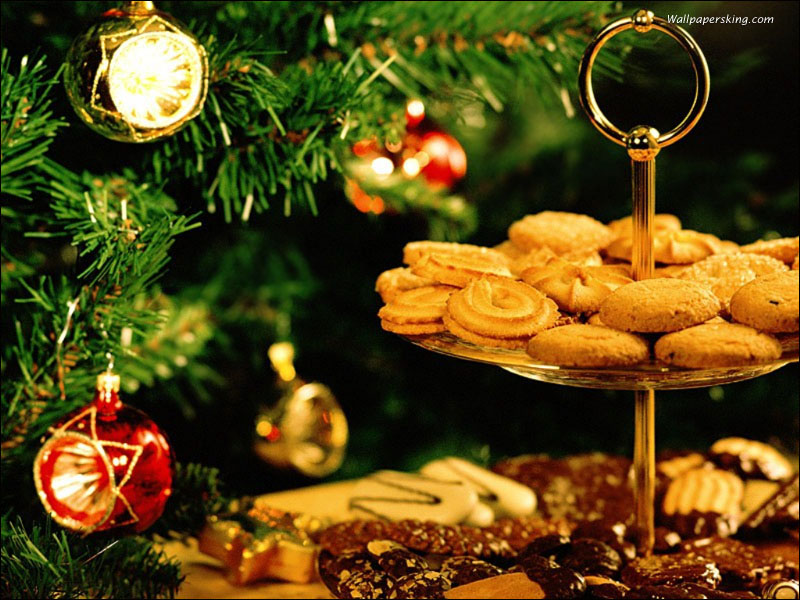 圣诞卡的风俗,渐渐流行起来。当初圣诞卡的寄送,只通行在基督徒之间,到了二十世纪初,普遍风行,不论是不是基督信徒,都以圣诞卡向亲友祝福,和恭贺新年。
圣诞卡的风俗,渐渐流行起来。当初圣诞卡的寄送,只通行在基督徒之间,到了二十世纪初,普遍风行,不论是不是基督信徒,都以圣诞卡向亲友祝福,和恭贺新年。
另一种说法:圣诞卡始于一八四四年。当时,英国维多利亚女皇和Albert太子在伦敦的温莎堡里庆祝圣诞节,邀请王族儿童入宫参加宴会,请柬上印有祝贺的词句。欧洲人从此纷纷仿效,用这种写上祝贺词的卡片来互相祝贺圣诞和新年。
圣诞卡片从早期的单色印刷至今日的色音俱全,不但让收到卡片的人大饱眼福,而且还大饱耳福,一张张会发出声音的圣诞卡使整个节日的气氛更加浓厚。
圣诞节这天,指出天下一家世界大同的理想,只有以和平与仁爱的言行达成。寄赠圣诞卡,除表示庆贺圣诞的喜悦外,就是向亲友祝福,以表想念之情。以前圣诞卡的画面,多半与耶稣圣诞有关;现在的图样,真是花样百出,多采多姿。如果你有亲友在遥远的地方,平日忙于工作很少联系,那么赶紧趁圣诞节寄上一张圣诞卡,表达你的想念和祝福吧。我们在网页上提供了一些写圣诞贺卡祝词的例子,大家在写圣诞卡的时候可以参考一下。
Part 5 Christmas Party 庆祝圣诞节
Dialogue Script 1 对话原文 1
Peter : Merry Christmas! 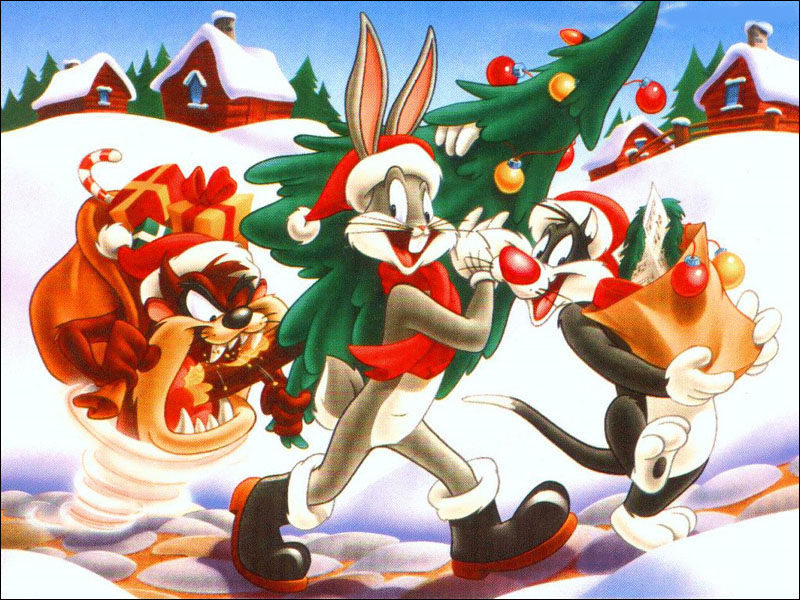
Helen: The same to you!
Peter: Are you doing anything special?
Helen: We're having some friends over. What are you doing?
Peter: Oh, I'm just taking it easy.
讲解:
1. Merry Christmas! 圣诞快乐!这是一个约定俗成的用法了,这与其他的节日祝福语不同。比如:我们可以说Happy Thanksgiving! Happy Easter. 但不能说Happy Christmas!
2. The same to you! 这里表示“也祝你圣诞快乐”,回答别人对你的问候,为了避免重复,就可以这么说,当然,你也可以回答“Merry Christmas!”。
3. Peter问Helen Are you doing anything special? 你有什么特殊的安排吗?Helen 回答说We're having some friends over. 我们会邀请一些朋友来家里玩。over这里表示“过来”,例如:I asked her over. 我请她过来的。He's coming over. 他正走过来。
4. 那么Peter会做些什么呢?他说,I'm just taking it easy. 意思是说,我自己轻轻松松的过节,不会为圣诞节而忙碌。take it easy,表示“沉住气, 别紧张,慢慢来”或者“轻松轻松,休息”。
Dialogue Script 2 对话原文 2
Helen: Are you all ready for Christmas?
Peter: Are you kidding? I haven't even started. I've done zero shopping. 
Helen: Well, you'd better get going. Christmas is only a week away.
Peter: I have to tell you that I'm one of those people who really gets stressed out by the Christmas rush.
Helen: Oh, I'm not. I love the holiday. I love the crowd, the shopping, the lights, the music, the food, the parties and all the presents.
Peter: That's just the beginning. My wife always spends too much money on Christmas. Takes me till April to pay off all our Christmas bills.
Helen: Now Peter, didn't you use to love Christmas when you were a kid? I know, maybe Christmas is for kids.
Peter: Well, kids enjoy it because they don't have to do all the shopping and pay all the bills.
Helen: Maybe that's true. But you know as well as I do, that Christmas is more than tinsel and trees. Christmas is about what's in your heart and how you can make others happy.
Peter: You're absolutely right, Helen. I'm going to try harder to be nice to people and try to keep the true spirit of Christmas in my heart.
Helen: I'm glad to hear that, Peter.
讲解:
1. Are you all ready for Christmas? 是说“你准备好过圣诞节了吗?”,all这里有强调的作用,表示“完全,全部”。Peter完全不以为然,他还没有开始准备过圣诞节呢。I haven't even started. I've done zero shopping. 我还没有开始,什么东西都没买呢。大家都知道,do shopping,是“购物”的意思,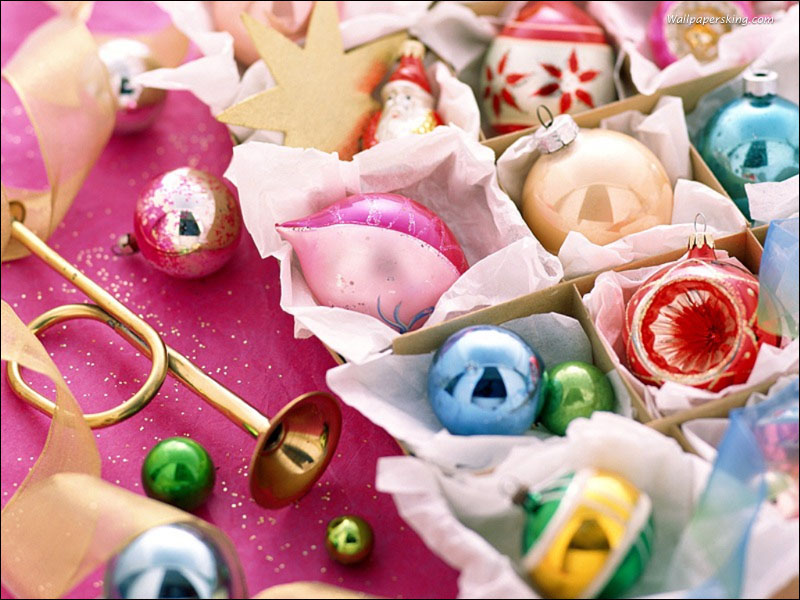 那么do zero shopping就是什么东西都没有买的意思。
那么do zero shopping就是什么东西都没有买的意思。
2. 为了庆祝圣诞节,西方许多家庭往往一进入12月份就开始忙着采购各种节日用品和圣诞食物及礼品等。在12月24日这天晚上,全家人一般都要相聚在一起举行圣诞晚餐。餐宴餐桌上的食品种类繁多,丰富多彩,而其中最主要的一道菜就是必不可少的传统佳肴——烤火鸡。在西方人眼里,没有烤火鸡的晚餐就算不上是圣诞晚餐。圣诞晚餐之后,人们还要上礼拜堂报告佳音,并为唱诗班预备糖果点心等。但是,为所有这一切做准备是一个非常费心费力费时间的过程。
3. 所以Helen建议Peter抓紧为圣诞节做准备,因为还有一周就是圣诞节乐。you'd better get going. Christmas is only a week away. get going是一个习惯用语,表示“开始行动”。
4. 但Peter却告诉Helen他在圣诞节的时候总是被购物狂潮搞的筋疲力尽。be stressed out,由于做某事而筋疲力尽,the Christmas rush,就是圣诞节的购物狂潮。rush这个词在这里表示“匆忙或激烈的行动,做某事的热潮”,大家一定听说过gold rush这个词组,就是指淘金热潮。
5. Helen很喜欢过圣诞节,她说她喜欢圣诞节的一切,包括购物,彩灯,音乐,礼物等等。可是Peter认为这只是噩梦的开始。因为他的妻子为圣诞节花了太多的钱,要到四月份他才能付清所有的账单,所以他才会被购物狂潮搞的筋疲力尽。pay off 还清(债务等),付清。
6. Helen听Peter对圣诞节有如此多的抱怨,就好奇地问他,didn't you use to love Christmas when you were a kid?你小时候不喜欢过圣诞节吗?used to do something,表示“过去经常做某事”。 因为Helen也认为圣诞节是孩子们的节日。 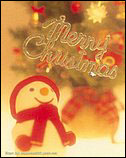
7. Peter说孩子们喜欢过圣诞节是因为他们不用为圣诞节购物,也不用付所有的账单。的确,大人们过节的时候会比小孩子有更多的烦恼。Helen说,虽然过圣诞节费时费力,但是圣诞节并不仅仅是亮片装饰和圣诞树,Christmas is more than tinsel and trees. Christmas is about what's in your heart and how you can make others happy. 圣诞节代表了你心中的希望和你怎样能使别人开心。
8. Peter 认为Helen说的很对,所以他下定决心要对别人更好一点,并且把圣诞节的精神长留心中。的确,过圣诞节并不只是吃吃喝喝,互赠礼物,最重要的就是把圣诞节的精神流传下去。
 收听单词发音
收听单词发音 




